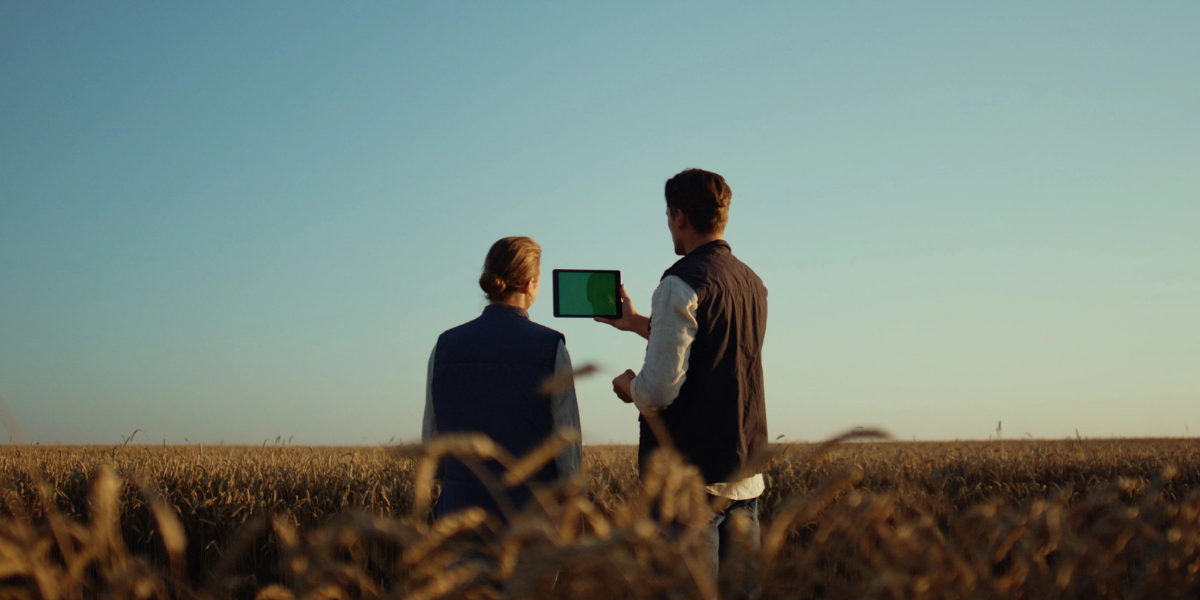We sat down with the Foods Connected Head of Customer Success - Procurement and Protein Optimise to talk beef prices, how the US meat market has changed and why consumers will always buy beef.
Tell us a little about yourselfI grew up in Wisconsin on a 500-head cattle operation, which I helped my parents start. My dad had spent 35 years in the paper industry and was offered early retirement, so he decided to start up the farm. My dad ran that farm until he retired at 75.
From paper to cattle is a change – why the move?
My dad had grown up on a family dairy farm himself – so it was in his blood. That then sparked an interest in me too. I went to college at University of Wisconsin-Madison and was in an agricultural fraternity there. I started working at the university’s Meat Lab and just fell in love with it. Every morning before class I was harvesting and processing cattle, pigs, and sheep, and I decided that was what I wanted to do for my career.
How did you get into the meat industry?
In my senior year at Madison, I went to a meat judging competition and met some professionals from Packerland Packing Company in Green Bay. I started out there as a yield analyst. I worked on production yields, new product development, and packaging specifications.
I started working at the university’s Meat Lab and just fell in love with it. Every morning before class I was harvesting and processing cattle, pigs, and sheep, and I decided that was what I wanted to do for my career.
About a year after I started, we were bought by Smithfield Foods. They wanted a beef person to go out to the corporate office in Virginia, so I moved out for a couple years there to focus on beef and fresh pork production reporting. Then I came back to Wisconsin to be their main beef yield analyst.
We did a huge yield project where we tested fifty to one hundred head of cattle every Saturday for a year. We tested every quality grade, yield grade, and possible product specification. When that project was wrapped up, I took over their scheduling/supply chain team, doing all the forecasting and production planning. We processed sales orders, created production plans, and did availability forecasting for our five facilities. Then Smithfield Foods decided to concentrate on pork and sold the beef group to JBS USA.
I moved back into operations and business analysis, and then again back into the supply chain world. There I helped them install a new supply and demand planning system and traveled the country with their Head of Beef Operations, going to every plant and walking the floor looking for cost savings and yield improvement opportunities.
From there, I had the opportunity to return to Smithfield Foods and focus on continuous improvement and lean manufacturing across their fresh pork facilities.
What was it about Foods Connected that attracted you to the role?
It was just a really interesting opportunity to look at the areas that are neglected in legacy beef. A number of companies are using programs that were designed and developed in somebody's garage or that their IT team came up with 25 years ago. There are some very rudimentary tools reporting very important metrics.
A number of companies are using programs that were designed and developed in somebody's garage or that their IT team came up with 25 years ago. There are some very rudimentary tools reporting very important metrics.
And how has the industry changed in the time that you've worked in it?
It has softened a lot – and it is ever evolving. When I started, it was very authoritarian and that has drifted away societally for good reasons. It is a more approachable industry for more people.
And what changes are impacting consumers?
Probably simple changes such as language usage – we don't use the word slaughter anymore. It’s now harvest and processing instead of kill and cut. It just sounds more approachable.
It’s very different for the consumer. When I started we still did a lot of bone-in products. There were butchers in the grocery store, and they'd break things down further and tell people how to use them, focusing on value. Now, it's all very sanitary. Very sterile. The meat gets cut at the plant and goes directly into the case at the supermarket. If a consumer doesn’t know what to do with it, they go online to look.
Butchers have predominantly disappeared. There's a handful of stores, but it’s more of a speciality.
At the moment, there seems to be a new story about the beef prices every week. What do you think has led to this point in the market?
It’s numerous things. We had some pretty bad drought in the southwestern US, Texas – and there’s a lot of cattle that are grown down there. So that led to some herd shrinkage. There wasn’t grain, there wasn’t water, there weren’t crops – they just couldn’t raise cattle.
Generationally, there has also been a number of ranchers getting out of business. So, the dairy industry has morphed a lot into very, very large farms, say 5,000, 10,000 cows, rather than the family farm of twenty cows. You can't feed a family off that anymore.
Generationally, there has also been a number of ranchers getting out of business. So, the dairy industry has morphed a lot into very, very large farms, say 5,000, 10,000 cows, rather than the family farm of twenty cows.
Because of that, there's been a lot more technology put into place in the dairy industry. Sexing semen is huge right now, so a farmer can decide exactly what and when he needs to breed to produce more milk. So, that is really a change in the siring process, farmers are much more selective on exactly what they're going to get.
Do you think consumers are willing to pay the higher prices?
Well they have been. It's interesting. Years ago, there was a study done about pork – and pork has always been the cheaper alternative to beef, but there's kind of a terminal amount of pork that the US consumer would eat. When beef prices went up, beef volume sales didn't go down and pork sales didn’t go up. Pork stayed pretty much flat even though it was cheaper alternative. If people want to go and get beef, then they go get beef – or they get poultry.
Beef will always be driven by ground beef. That really is probably what 95 percent of people will go out and buy on a weekly basis. They make burgers, meatloaf, meatballs, all that kind of stuff. We are seeing more and more beef and pork mixtures in the stores, because it cuts that cost down just a little bit to keep that price point. People are hurting when it comes to current prices.
How are things going to change in the US meat market in 2026?
You won't see a change in the cattle cycle until the end of 2027, beginning of 2028. People can't rebuild that fast. You need land, you need resources. You need all those things, and if you divested the family farm, let's say now it's a solar field. Then those resources are gone.
You won't see a change in the cattle cycle until the end of 2027, beginning of 2028.
People can't rebuild that fast.
Basically incentives have to be put in place for people to want to do it. If there's ever a huge plummet in the dairy market, you see potential dairies liquidating herds. Some of that happened a few years ago too, which meant there were fewer mothers to have calves. So, there's been a piece of this build-up coming.
But the cattle cycle in the US is just that – a cycle. It does this every 10 years or so. This is just a drawn-out one right now. It's probably going be a 12- to 14-year cycle rather than the normal 10 year, where the herd is built up.
When you go to Mica 2025, what do you think you're going to be talking about?
Really being able to be nimble, I think, is one of the biggest things. To me really understanding if you're cutting to specification is huge, really understanding if you're doing the best you can with yields is huge. Because there are so many things you cannot control. You can't control the cost of cattle. You can't control necessarily the cost of labour. You can’t control the cost of taxes. There's so much you cannot control that you have to identify and focus on the things you can. That’s where Foods Connected can help.
On 10-12 November 2025, Jacob will be attending MICA in Forth Worth, Texas. Find out more about the event here.
Discover more about our bespoke meat management software solution – Protein Optimize. Download your free brochure here.
.jpg)
Greer McNally
Greer has over 15 years’ experience writing about trends in the food and retail sectors. She lives in a little village by the sea in Northern Ireland and loves creating content that informs how people think about the food industry. A recent career highlight was interviewing the legend that is Dr Temple Grandin.
Stay up to date
Stay up to date
Browse Posts
- December 2025
- November 2025
- October 2025
- September 2025
- August 2025
- July 2025
- June 2025
- May 2025
- April 2025
- March 2025
- February 2025
- January 2025
- December 2024
- November 2024
- October 2024
- September 2024
- August 2024
- July 2024
- June 2024
- May 2024
- April 2024
- March 2024
- February 2024
- January 2024
- December 2023
- November 2023
- October 2023
- September 2023
- August 2023
- July 2023
- June 2023
- May 2023
- April 2023
- March 2023
- December 2022
- November 2022
- October 2022
- September 2022
- August 2022
- July 2022
- June 2022
- May 2022
- April 2022
- March 2022
- February 2022
- January 2022
- December 2021
- November 2021
- October 2021
- August 2021
- July 2021
.png)
/Blog%20Headers/shutterstock_1927957907%20(1).jpg)
/Blog%20Headers/shutterstock_1845178195%20(2).jpg)
/Blog%20Headers/shutterstock_2473376713.jpg)
/Blog%20Headers/shutterstock_2133827717%20(1).jpg)
/Blog%20Headers/shutterstock_2247276303.jpg)
.png)



.png)
.png)
/Blog%20Headers/shutterstock_2390798777.jpg)
.png)
.png)
.png)
/Blog%20Headers/shutterstock_2084018437.jpg)
.png)
.png)

/1.%20HubSpot%20Images/Roger%20New%201a%20(1)%20(1).jpg)